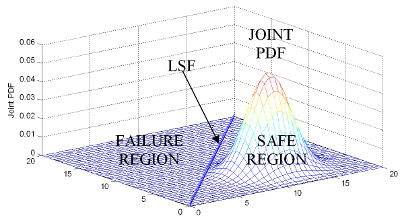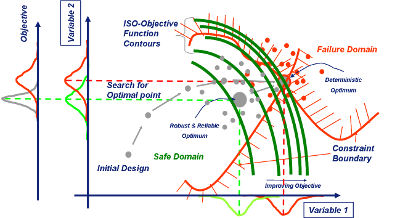Noesis and Maplesoft in Design Optimization Partnership
Direct connection links OPTIMUS with Maple and MapleSim.
Latest News
June 27, 2012
By Anthony J. Lockwood
Noesis Solutions (Leuven, Belgium) and Maplesoft (Waterloo, ONT) recently announced a partnership that brings together the OPTIMUS process integration and design optimization system from Noesis Solutions with Maplesoft’s Maple technical computing and documentation environment and the MapleSim multidomain physical modeling environment. The combination of Maple, MapleSim, and OPTIMUS gives users sophisticated ways of doing parameter studies for efficient designs in complex engineering processes, say the companies.
The OPTIMUS platform is described as automating “the traditional guess and correct simulation based design process” with optimization algorithms that “efficiently” direct the simulation to identify the best designs. After evaluating the most promising design candidates produced by this process, you select the optimal design option to verify in detail.
 |
| Image courtesy of Noesis Solutions. |
OPTIMUS, according to Noesis, works by linking your software tools and orchestrating a “high-performance parametric simulation campaign.” Optimus has the ability to incorporate disparate simulation tools into a single optimization environment, enabling it to be used to optimize a design that had its different attributes evaluated with multiple, non-related simulation tools. OPTIMUS is said to assess and optimize variability in the results using robustness and reliability methods.
By automating design option assessments, OPTIMUS eliminates manual assessments. “OPTIMUS ]helps] customers design better products while reducing development time and expenditure,” says Hans Wynendaele, Noesis Solutions president and CEO, in a statement accompanying the announcement.
OPTIMUS offers standard connections, direct interfaces, and user frameworks to achieve its process integration with your software tools. The connection for Maplesoft products, which is implemented as a direct interface, is said to allow Maple and MapleSim users to apply OPTIMUS design optimization technology to find what is described as “the best parameter values for their complex designs, while continuing to take advantage of the flexible design environments and tools of MapleSim and Maple.” On the other hand, OPTIMUS users, according to Noesis, are now able to add Maple and MapleSim as system simulation software tools in their design and development processes.
 |
| Image courtesy of Noesis Solutions. |
“Balancing different design objectives is always a challenge, and it’s even more difficult when different simulation tools are used to measure different aspects of the project,” says Dr. Laurent Bernardin, executive vice president and chief scientist at Maplesoft, in a press statement. “Now MapleSim and Maple users can incorporate their designs into the OPTIMUS framework to leverage high-powered parameter optimization techniques across their entire project.”
“Maplesoft can now offer a solution that links design optimization with its powerful multidomain physical modeling and symbolic computation technology,” adds Wynendaele. “OPTIMUS, combined with Maple and MapleSim, allows customers to design superior products that set new standards in product excellence.”
For more information, visit Maplesoft and Noesis Solutions.
Go here for additional details on OPTIMUS.
Go here for more on design optimization with OPTIMUS.
Go here for more on process optimization with OPTIMUS.
Go here for more on robust optimization with OPTIMUS.
Go here for additional details on Maple.
Go here for additional details on MapleSim.
See why DE’s editors selected OPTIMUS interface for Maple and MapleSim as their Pick of the Week.
Sources: Press materials received from the company and additional information gleaned from the company’s website.
Subscribe to our FREE magazine, FREE email newsletters or both!
Latest News
About the Author
Anthony J. Lockwood is Digital Engineering’s founding editor. He is now retired. Contact him via [email protected].
Follow DE





